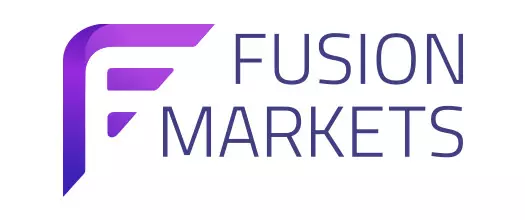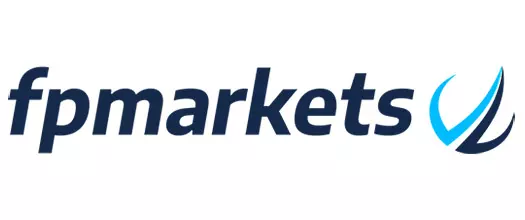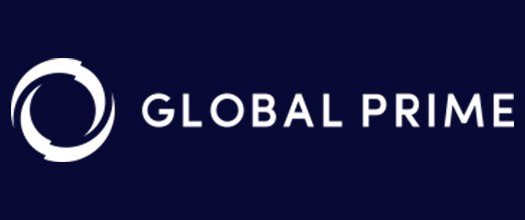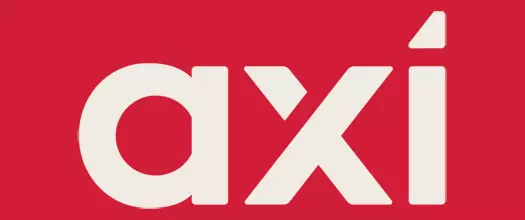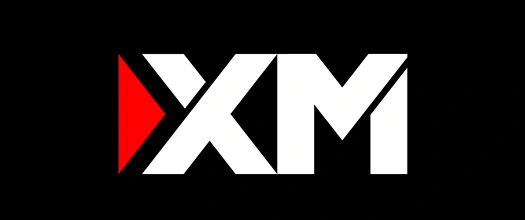Our team of expert traders tested several regulated and trustworthy Natural gas trading brokers and compiled a toplist with the best among them. Every platform allowing CFD’s on Natural gas received a quality score based on several factors, including Trustpilot rating, regulation, fees and commissions, available trading platforms, customer service and more.
 Fusion Markets74-89% of retail's CFD accounts lose money
Fusion Markets74-89% of retail's CFD accounts lose money FP Markets73.85% of retail investor accounts lose money
FP Markets73.85% of retail investor accounts lose money Global Prime74-89% of retail CFD accounts lose money
Global Prime74-89% of retail CFD accounts lose money Pepperstone75.5% of retail investor accounts lose money
Pepperstone75.5% of retail investor accounts lose money AxiThe vast majority of retail client accounts lose money
AxiThe vast majority of retail client accounts lose money XM Group72.82% of retail investor accounts lose money
XM Group72.82% of retail investor accounts lose money
Natural Gas Trading Brokers
It goes without saying that when traders want to get exposure to the natural gas market, the broker they will choose plays a crucial role. Picking a professional, trustworthy, and reputable broker might take a while, considering how huge the range of options is. There are a number of factors to be reckoned with, and traders should closely examine the broker’s track record, the available instruments, the jurisdictions the company operates in, whether fees are charged when depositing or withdrawing funds, whether the customer support is available at all times, and whether assistance is offered in their language, among others.
- 1. AvaTradeMin Deposit$250Fees
- $/€/£50 inactivity fee
- No deposit and withdrawal fees
CommissionsDoes not charge a commissionSpread$0.002 over marketLeverage EU10:1Leverage non-EU50:1CFDs are complex instruments and come with a high risk of losing money rapidly due to leverage. 71% of retail investor accounts lose money when trading CFDs with this provider. You should consider whether you understand how CFDs work and whether you can afford to take the high risk of losing your money.Celebrated for its customer-first approach and enhanced trading experience it offers, AvaTrade has been a prominent figure in the development of the trading world since 2006. With more than 300,000 happy customers and counting, the broker offers a roster of more than 1,000 tradable instruments, including indices, stocks, cryptocurrencies, Forex, and commodities. With AvaTrade, you can get exposure to a wide range of markets from metals to energies, natural gas included.
Trading natural gas is possible on AvaTrade’s advanced platforms MetaTrader4 and MetaTrader5 and even while being out and about, thanks to its proprietary platform AvaTradeGO. While trading natural gas with the broker, its users will be offered competitive spreads and can trade up to 10:1 leverage.
To get started with commodity trading, AvaTrade users should first pick which of the accepted payment methods they prefer to use to fund their accounts. The broker offers a quick withdrawal process that takes one or two working days at most. Say nothing of the fact that when topping up their accounts or withdrawing their funds, traders will not face extra charges.
AvaTrade is worth considering if traders want to be sure that the broker they have chosen is heavily regulated, as the broker is authorized to operate in the EU, Australia, Japan, South Africa, and the United Arab Emirates, among others.
Traders are also offered live customer support in dozens of languages via live chat, over the phone, or via email.
- 2. FBSMin Deposit$10FeesNo fees for deposits and withdrawalsCommissions
- No commission for standard accounts
- 0,05% for opening and 0,05% for closing positions for crypto accounts
Spread14.00Leverage EU10:1Leverage non-EUN/ARisk warning: ᏟᖴᎠs are complex instruments and come with a high risk of losing money rapidly due to leverage. 76.5% of retail investor accounts lose money when trading ᏟᖴᎠs with this provider. You should consider whether you understand how ᏟᖴᎠs work and whether you can afford to take the high risk of losing your money.Having a sterling reputation among traders, FBS is a broker that now accommodates users from more than 190 countries around the globe. This is a reliable and trustworthy broker with over 10 years of experience that is looking to offer the best trading conditions.
FBS offers its users the opportunity to play a number of markets, and trading instruments like Forex, cryptocurrencies, stocks, metals, indices, and energies are all within reach. If energies are the trading instrument you prefer to focus on, you can decide between natural gas, WTI oil, and Brent oil, among others.
Opening a demo account is the way to go when traders are making their first steps in trading natural gas or when they want to wrap their heads around the platform without risking their funds. There are several other account types for traders to decide between, and they can decide on a standard, crypto, cent, or Islamic account. FBS provides its users with powerful trading platforms that offer efficiency and optimized trading speed, and in addition to the recently added FBS Trader, the broker also offers MetaTrader4 and MetaTrader5.
The broker supports a number of payment systems, and moving funds to and from FBS is possible via Neteller, Skrill, Mastercard, Visa, Rapid Transfer, and wire transfer, among others. No matter if they are about to deposit or withdraw funds, traders will not face extra charges, and what is even better is that payments in both directions are wrapped up in the blink of an eye.
FBS prides itself over its team of highly qualified professionals, and whenever traders have any questions or want to address any queries, they can do so via email, live chat, or over the phone.
- 3. FP MarketsMin Deposit
- $100 or the currency equivalent for standard and raw accounts
- $1,000 for Iress
Fees- No deposit fees
- 2% up to 30 USD + country fees for withdrawals via Neteller
- 1% + country fees for withdrawals via Skrill
- 0.50% for withdrawals via FasaPay and Perfect Money
Commissions$3 per 100,000 lots tradedSpread- Min leverage 0.004
- Average spread 0.05
Leverage EU10:1Leverage non-EU25:1Trade Responsibly: Derivative products are highly leveraged, carry a high level of risk and are not suitable for all investors. Features of our products including fees and charges are outlined in the relevant legal documents available on our website. The legal documents should be considered before entering into transactions with us.Offering well over 10,000 CFD products across cryptocurrencies, shares, commodities, Forex, and indices, FP Markets is undoubtedly among the natural gas brokers that deserve consideration. By joining the broker’s community, traders will have the chance to trade on one of the world’s largest exchanges, benefit from tight raw spreads from 0.00, and low commissions.
If traders do not want to focus exclusively on natural gas but are interested in other commodities, they might want to add crude oil, silver, gold, platinum, palladium, corn, wheat, or coffee to their portfolios, as well.
Not to mention that the broker offers a range of account and platform types that are sure to meet the requirements of traders of different experience levels.
The broker has taken care of its users also in terms of payments, and adding and removing funds from their accounts is a pushover, thanks to payment processors like bank transfer, Neteller, Visa, Mastercard, Skrill, STICPAY, or Rapid Transfer. Cryptocurrencies like Bitcoin, Ethereum, Litecoin, and Dash, along with a number of country-specific payment processors, are also among the featured options. While trading natural gas with FP Markets, traders will also benefit from fast and easy withdrawals that, most of the time, will not cost them a dime.
FP Markets has a long track record as the platform started operating in 2005, which makes it a broker that deserves traders’ attention if they insist on using the services of a reputable and reliable broker. Not to mention that FP Markets is regulated and authorized by the top-tier Australian Securities and Investments Commission and the Cyprus Securities and Exchange Commission.
- 4. AdmiralsMin Deposit$25Fees
- No deposit fees
- One free withdrawal request per month
- $10 inactivity fee
Commissions- No commission for trading stocks
- The commission that is charged when trading currencies and metals is based upon the account type and the monthly volume
Spread0.006Leverage EU10:1Leverage non-EU20:1Risk warning: Trading Forex (foreign exchange) or CFDs (contracts for difference) on margin carries a high level of risk and may not be suitable for all investors. There is a possibility that you may sustain a loss equal to or greater than your entire investment. Therefore, you should not invest or risk money that you cannot afford to lose. Before using Admiral Markets UK Ltd, Admiral Markets Cyprus Ltd, Admiral Markets AS Jordan Ltd, Admiral Markets Pty Ltd and Admirals SA (PTY) Ltd services, please acknowledge all of the risks associated with trading.Admirals is yet another top-tier provider of natural gas CFD trading that has been an active player in the online trading scene since 2001. This is a brand name traders might already be familiar with as the broker has significantly expanded its international footprint through a number of fully-licensed trading companies.
To provide its users with the ultimate trading experience, the broker has introduced several trading tools like StereoTrader. If they are looking to boost their trading experience, Admirals users should consider giving MetaTrader Supreme Edition a chance.
The broker knows that the variety of covered markets matters, and to stay relevant covers stocks, bonds, cryptocurrencies, indices, Forex, EFTs, and commodities, among others. With 28 covered commodities, you can trade with no commission 24 hours a day, 5 days a week, and benefit from competitive leverage rates. Admirals users can get exposure to several top energy commodities, including natural gas, Brent oil, and WTI oil, as well as to metals and agriculture.
To meet the requirements of all its users, Admirals gives them a choice from several flexible account types and a slew of funding options. What traders might be happy to hear is that they will be allowed to maintain multiple accounts in different currencies at the same time.
Admirals offers support via live chat, phone, and email to ensure that there will always be someone to assist them with all organizational and technical matters. The broker also delivers when it comes to funds security, and its users are offered insurance coverage, negative balance protection, and will have their funds kept in segregated accounts.
- 5. ActivTradesMin Deposit$500Fees
- 1.50% fee for deposits via credit and debit cards
- £9 for withdrawals via bank transfer
CommissionsA commission is only charged when trading stocksSpread0.005 pipsLeverage EU10:1Leverage non-EU100:1CFDs are complex instruments and come with a high risk of losing money rapidly due to leverage. 81% of retail investor accounts lose money when trading CFDs with this provider. You should consider whether you understand how CFDs work and whether you can afford to take the high risk of losing your money.Founded in 2001, ActivTrades initially had its headquarters in Switzerland but a few years later, moved them to London. The broker did not lose momentum throughout the years, and back in 2021 introduced the investors’ profile that offers leverage of 1:1 and thanks to which traders can negotiate CFDs on stocks without paying a commission or a swap.
The award-winning broker strives for perfection and wants to provide its users with an optimal investing experience, and for this reason relies on a state-of-art infrastructure. The broker has been serving a global client base for more than two decades and is alive to the needs and preferences of professional and total novices.
The market variety is undoubtedly up to scratch, and ActivTrades keeps its users covered no matter if cryptocurrencies, shares, Forex, indices, or commodities are what they have on their brains. Those who decide to explore the world of commodities with ActivTrades will be presented with CFDs on metals, energies, softs, and grains. As for the spread of natural gas, it starts from as little as 0.005 points.
Account fundings and withdrawals are worry-free and take almost no time to complete, and traders can manage their funds through Skrill, Neteller, PayPal, Sofort Banking, Maestro, Mastercard, or bank transfer. What traders should keep in mind, however, is that depending on their payment processor of choice, they might face extra charges when moving funds to and from ActivTrades.
ActivTrades wants to deliver the safest trading environment for its users, and traders can have no doubt that the broker is fully authorized as it is regulated by the Financial Conduct Authority and the Securities Commission of the Bahamas.
- 6. IC MarketsMin Deposit$200FeesThe broker does not charge inactivity feesCommissions
- No commission for standard accounts
- $3.5 per standard lot round turn for raw spread accounts
Spread- 0.002 minimum spread
- 0.004 typical spread
Leverage EU10:1Leverage non-EU100:1Risk Warning: Trading Derivatives carries a high level of risk to your capital and you should only trade with money you can afford to lose. Trading Derivatives may not be suitable for all investors, so please ensure that you fully understand the risks involved and seek independent advice if necessary.IC Markets has evolved into one of the most prominent and largest CFD providers by giving traders all they might be after during their trading experience. The broker offers instant account opening and funding and gives traders the chance to play a number of markets, including Forex, indices, commodities, bonds, stocks, and cryptocurrencies.
Traders can pick and choose from a diverse range of commodities, and energies, metals, and agriculture are all accounted for. In addition to natural gas, IC Markets users will also be allowed to trade Brent oil and WTI oil and benefit from tight pricing and flexible lot sizes.
IC Markets offers state-of-art trading platforms, and along with MetaTrader 4 and 5, traders are also presented with cTrader. Additionally, IC Markets users will get access to a number of cutting-edge trading tools, including ladder trading, inbuilt spread monitoring, automated close of trades with custom order templates, and depth of market, to name a few.
The broker has given much thought to its users that want to start trading natural gas or such that want to brush up their knowledge, as the education center contains webinars, podcasts, and video tutorials that will help them achieve their goals.
Traders can have full confidence that the broker is monitored by some of the most stringent regulators across the globe as it is authorized by the FSA, SCB, ASIC, and CySEC. IC Markets is available in more than a dozen languages, and traders are offered around-the-clock assistance via email, phone, or live chat.
- 7. XTBMin Deposit$/€/£250Fees
- Inactivity fee of €10 or the currency equivalent
- 2% for deposits via Paysafecard
- 1% for deposits via Neteller
- 1.5% for deposits via SafetyPay
Commissions- No execution commission for standard accounts except for ETF trades and equity CFDs
- Pro account type holders will pay a commission for every trade, and it will vary depending on the country they live in
Spread- 0.004 minimum spread
- 0.01 target spread
Leverage EU10:1Leverage non-EU67:1Contracts for Difference ("CFDs") are leveraged products and carry a significant risk of loss to your capital, as prices may move rapidly against you and you may be required to make further payments to keep any trades open. These products are not suitable for all clients, therefore please ensure you fully understand the risks and seek independent advice.Established in 2002, XTB became the very first leveraged foreign exchange broker house in Poland. Since that time, the broker has remained at the forefront of the online trading world as the company provides retail traders with hassle-free and instant access to hundreds of global markets.
XTB’s product offerings include a wide variety of markets like Forex, indices, cryptocurrencies, stocks, ETFs, and commodities. If you decide to switch to XTB to trade commodities, you will be allowed to go for popular commodities like silver, gold, oil, and natural gas, among others. If natural gas trading is what you are most excited about, you will benefit from commission-free trades and maximum leverage of 10:1, while the minimum spread is 0.004.
Traders can get a feel for the services the broker offers without a care in the world, as once they set up an account, they can use the platform for free for 30 days. As for the broker’s platform suite, XTB only offers xStation 5 and xStation mobile. What distinguishes the platform XTB has introduced are its intuitive and simple design, the wide variety of trading instruments it offers, as well as the advanced tools traders can access on their desktop devices or hold in the palm of their hands.
XTB gives its users the opportunity to trade on world-class platforms that are customizable, offer superior execution speeds, and benefit from sentiment, performance statistics, calculator, market order depth, and chart trading, to name a few.
The broker also delivers in terms of customer service, and in addition to the wide variety of languages in which traders can get assistance, XTB has also ensured that its users can reach the support hosts in the most convenient manner for them.
- 8. TickmillMin Deposit$100Fees
- No deposit and withdrawal fees
- No inactivity fee
Commissions- 2 currency units per side per lot commission for Pro account
- 1 currency unit per side per lot commission for VIP accounts
Spread- 0.001 minimum spread
- 0.004 typical spread
Leverage EU10:1Leverage non-EU50:1Risk Warning: Trading financial products on margin carries a high degree of risk and is not suitable for all investors. Losses can exceed the initial investment. Please ensure you fully understand the risks and take appropriate care to manage your risk.Tickmill was founded in 2014 and started making waves from the very beginning of its operations. With 270,000 satisfied clients and counting, it can safely be said that the broker knows how to maintain its popularity and the appeal of the offered services.
The market variety is undoubtedly one of the keys behind Tickmill’s enormous success, and with 180 instruments and counting on offer, traders are bound to find their preferred market. The instruments traders will get access to upon registration include precious metals, stocks, cryptocurrencies, bonds, stock indices, and oil. Traders who prefer to focus on natural gas are offered a maximum spread of 50:1, while spreads vary from 0.001 and 0.004.
Tickmill allows its users to get exposure to the world’s financial markets using the strategy they prefer, as they can go for hedging, scalping, and EAs, among others. The broker takes pride in its ultra-fast execution times, superior trading conditions, as well as exceptionally low commissions, features that make the worthwhile brokers stand out from the crowd.
The broker keeps traders covered no matter their style and level of experience as there is an account type to fulfill the requirements of VIPs, as well as such that are suitable to total novices and professional traders. The broker relies on some of the world’s most popular trading platforms, including MetaTrader 4 and MetaTrader 5, and as a result, traders will gain access to customizable charts, integrated indicators, CFDs on all covered markets, trading signals, advanced technical analysis, as well as all types of trade orders.
Traders should not lose sleep about the broker’s reliability and trustworthiness as Tickmill is authorized by the CySEC, FCA, FSCA, and FSA, among others.
- Min Deposit$50Fees
- No deposit fees
- Cashouts incur fees that are based on the chosen currency
Commissions- No commission for standard accounts
- $6.00 per lot for ECN prime
- $15 per Million for ECN institutional
Spread25 pointsLeverage EU10:1Leverage non-EU50:1Risk Warning: Trading foreign exchange on margin carries a high level of risk and may not be suitable for all investors. The high degree of leverage can work against you as well as for you. Before deciding to trade foreign exchange, you should carefully consider your investment objectives, level of experience, and risk appetite. The possibility exists that you could sustain a loss of some or all of your initial investment and, therefore, you should not invest money you cannot afford to lose. You should make yourself aware of all the risks associated with foreign exchange trading and seek advice from an independent financial advisor if you have any questions or concerns as to how a loss would affect your lifestyle. BlackBull Markets does not accept client applications from Canada and the United States.Founded in 2014, BlackBull Markets has evolved into a global online trading platform that has expanded its reach to Africa, Asia, South America, and Europe. The broker is dedicated to providing its users with premium trading conditions, and its users will be offered leverage of up to 500:1, spread from as little as 0.00 pips, and will gain access to more than 300 tradable instruments.
While using the worldwide network, traders will gain access to a wide range of markets, including Forex, shares, precious metals, indices, shares, and energy. Trading natural gas and oil is made exceptionally easy, and traders will benefit from fast execution, the broker’s low-cost pricing model, as well as flexible leverage options. The broker has seen to it that its users will be able to trade the way they want, and to this end, has provided them with some of the world’s most renowned platforms, including MetaTrader 4 and MetaTrader 5.
The satisfaction of its users is a top priority for the broker, and to ensure that BlackBull Markets will deliver in all departments, the broker offers high-level customer service. Getting in touch with the dedicated support and account managers is possible via email, phone, and live chat almost at all times.
BlackBull Markets offers accounts for every trader, and its users can pick from standard, prime, and institutional account types, and depending on their pick, they will be presented with a different minimum deposit amount, spread, and commission, among others.
- 10. XtradeMin Deposit$250, $500, $1,000, or $20,000 depending on the account typeFees
- No deposit and withdrawal fees
- Up to $50 inactivity fee per month
CommissionsNo commissionSpread0.13Leverage EU10:1Leverage non-EU150:1CFDs are complex instruments and come with a high risk of losing money rapidly due to leverage. 67.1% of retail investor accounts lose money when trading CFDs with this provider. You should consider whether you understand how CFDs work and whether you can afford to take the high risk of losing your money. You should consider whether you understand how CFDs work and whether you can afford to take the high risk of losing your money. Past performance is not a guarantee of future performance. Xtrade Europe Ltd is regulated by Cyprus Securities and Exchange Commission (“CySEC”).With more than a decade of operations, Xtrade has been providing its users from well over 20 countries with market-leading trading services. The broker is dedicated to building the highest levels of trust and goes out of its way to keep traders’ funds heavily protected. Xtrade continuously monitors the activity of all its users, encrypts all their transactions through 256-bit SSL, keeps their funds in segregated accounts, and offers an investor compensation fund, thus ensuring that traders’ experience will be smooth and worry-free.
The range of products traders will gain access to includes shares, indices, cryptocurrencies, bonds, ETFs, and commodities. Xtrade’s selection of commodities includes natural gas, crude oil, silver, gold, wheat, cotton, and coffee, to name a few. If you start trading natural gas CFDs, you will benefit from lightning-fast execution and up to 200:1 leverage.
One more reason why Xtrade might be an instant attention-grabbing natural gas trading platform is that newcomers and returning users can redeem several special deals. The support agents will always be there to assist and guide traders if they face any issues with the bonus redemption or any other aspect of their trading experience.
The broker continues to gain international acclaim for the best-of-breed technology Xtrade uses, and its platforms are available not only on the web, but on mobile as well. Thanks to the mobile trading app Xtrade offers, its users will have the freedom to trade natural gas or play any market they prefer from any place they are in the world.
Formed deep beneath the earth’s surface, natural gas is a naturally occurring hydrocarbon used in many industries. It is one of the most attractive fuels because it is a naturally abundant fossil fuel that is also the least expensive and the cleanest of all fuels. It is a staple resource that is used in heating, cooking, and electricity production, to name a few, and not to mention that the number of vehicles that are powered by natural gas is already well above 20 million.
Natural gas also needs to be drilled from the ground as it exists alongside oil reserves, and these days, owing to the technological advancements in extraction methods, natural gas production has seen a massive increase. As with the other energy commodities, large price swings are also observed in the cost of natural gas. The rises and falls in the costs are mainly dictated by supply and demand, as well as the expectations of traders. Natural gas is not as rarely found as some of the other energy commodities, but creating the infrastructure that is needed in order to exploit it is rather costly.
Undoubtedly, oil is the most popular and preferred energy commodities traders tend to hone in on. Still, it is far from being the only alternative they have when they are looking to keep their portfolios diversified.
How Natural Gas Trading Works for Traders and Brokers
Natural gas is an in-demand commodity that is preferred because of the slew of trading opportunities it presents. The hyper development the industry has seen since 2006 has brought in numerous opportunities for traders to decide between when they want to get exposure to the market as they can go for futures contracts, focus on the share prices of transporting companies, and natural gas producing companies, among others.
When global natural gas production is concerned, figures show that back in 2021, the USA was the producer that led the way. Russia was the second biggest contributor to natural gas production. Yet, Russia is the country that has the largest proven natural gas reserves and is also the world’s leading exporting company.
- Futures – futures contracts are one of the most preferred ways to take a position on natural gas and for a reason, and these are agreements to sell or purchase something at a future date. Traders should keep in mind that when futures exchanges are concerned, the natural gas price fluctuates in $0.001 increments. Thus, based on how many increments or ticks, as they are also known, the price has moved away from the entry time, traders’ loss or profit will be determined.
- Options – options are financial instruments that can be used while trading stocks, currencies, bonds, and commodities, and they allow traders to leverage their bets on natural gas or any other underlying asset. Just like all other types of options, with natural gas options, a put represents short positions, while calls represent long positions. Yet, what traders should consider is that there are a number of factors that cause market volatility, thus making it more challenging to use options.
- Spots – natural gas spots are settled right away and do not rely on futures contracts. These are trades on the actual natural gas price and are far more volatile when compared to futures, which is one of the main causes for the greater difficulties in deliveries that are reflected in spot prices.
- ETFs – another way to trade natural gas is through exchange-traded funds. In this way, traders will evade paying any storage costs that incur when holding physical commodities and avoid the complexities of natural gas futures contracts.
CFDs – these are contracts between brokers and traders that mirror the price movement of natural gas. CFDs allow traders to speculate on the price of the underlying asset without owning the physical commodity, and by going for them, traders do their best to benefit from the difference between the price when opening and closing the trade. The most obvious reason why traders prefer natural gas CFDs is that they give them the opportunity to get exposure to the market, no matter what their outlook on its movement is. In other words, traders can attempt to benefit from the upward and downward price movements.
Another thing traders should bear in mind about natural gas CFDs is that because of the offered leverage, they can trade with amounts that are greater than the ones they have deposited. Still, what traders should remember is that losing more than the deposited amount is also not excluded.
Another vital thing traders should bear in mind is that in exchange for executing sell or buy orders, brokers will charge an extra fee that is also known as commission. Depending on their broker of choice, the actions traders will be allowed to execute when using their chosen platform might not always be fee-free, and extra costs might incur when funding their accounts, withdrawing their funds, or when they have not placed trades for a while.
Why Natural Gas Prices Move
Natural gas is a growing favorite among traders mainly because of the inherent seasonal price fluctuations that are somewhat easy to predict. As with the other energy commodities, supply and demand are the key factors that drive prices up or down. On their end, supply and demand can be affected by multiple factors, including weather, alternative fuels, stored reserves, extraction, and treatment, among others.
